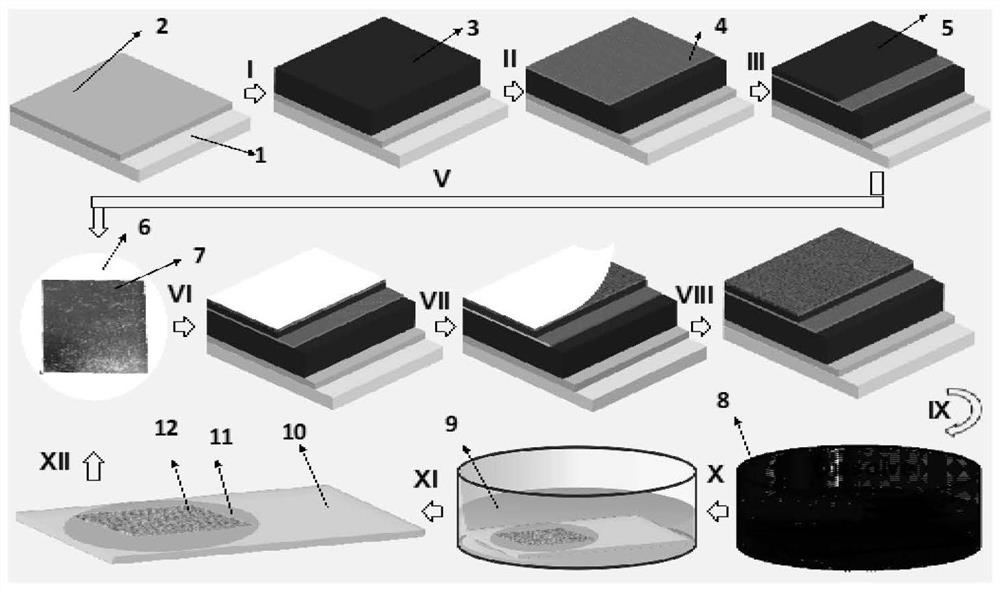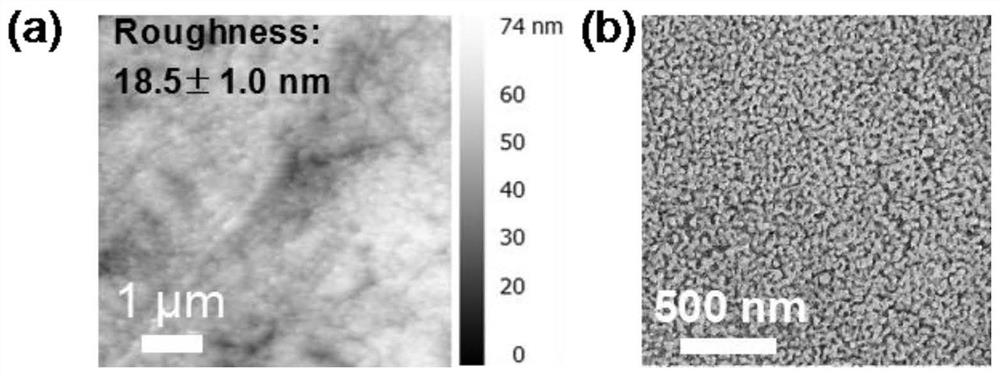An organic-inorganic perovskite solar cell and its preparation and recycling method
A solar cell and inorganic calcium technology, applied in circuits, electrical components, photovoltaic power generation, etc., can solve the problems of reducing the energy conversion efficiency of metal-organic-inorganic perovskite solar cells, the inability to form thin films, and the inability to eliminate complex preparation techniques , to achieve the effect of saving preparation cost, reducing preparation cost and reducing energy return time
- Summary
- Abstract
- Description
- Claims
- Application Information
AI Technical Summary
Problems solved by technology
Method used
Image
Examples
Embodiment 1
[0054] A preparation method of an organic-inorganic perovskite solar cell is carried out according to the following steps:
[0055] (1) ITO substrate preparation pretreatment
[0056] Spray the zinc oxide powder evenly on the surface of the ITO substrate 1, clean it with hydrochloric acid with a concentration of 6M, and then clean it with a detergent with a concentration of 1 wt% to remove oil stains, and then use acetone, isopropanol and deionized water for ultrasonic cleaning in sequence. Each sonication step was 10 min. Dry the cleaned ITO substrate 1 with an air gun and cut it into 25×25mm 2 The flakes are stored in a dry box, and the detergent is a commercially available conventional detergent;
[0057] (2) Electron transport layer preparation (I)
[0058] The ITO substrate 1 was treated with ozone for 15min, and then 15wt% of SnO 2 The nanoparticle aqueous solution plus deionized water is made into a 5wt% aqueous solution as a spin coating solution. Spin coating is c...
PUM
 Login to View More
Login to View More Abstract
Description
Claims
Application Information
 Login to View More
Login to View More - R&D
- Intellectual Property
- Life Sciences
- Materials
- Tech Scout
- Unparalleled Data Quality
- Higher Quality Content
- 60% Fewer Hallucinations
Browse by: Latest US Patents, China's latest patents, Technical Efficacy Thesaurus, Application Domain, Technology Topic, Popular Technical Reports.
© 2025 PatSnap. All rights reserved.Legal|Privacy policy|Modern Slavery Act Transparency Statement|Sitemap|About US| Contact US: help@patsnap.com



